Inside the race to zero emission public transport
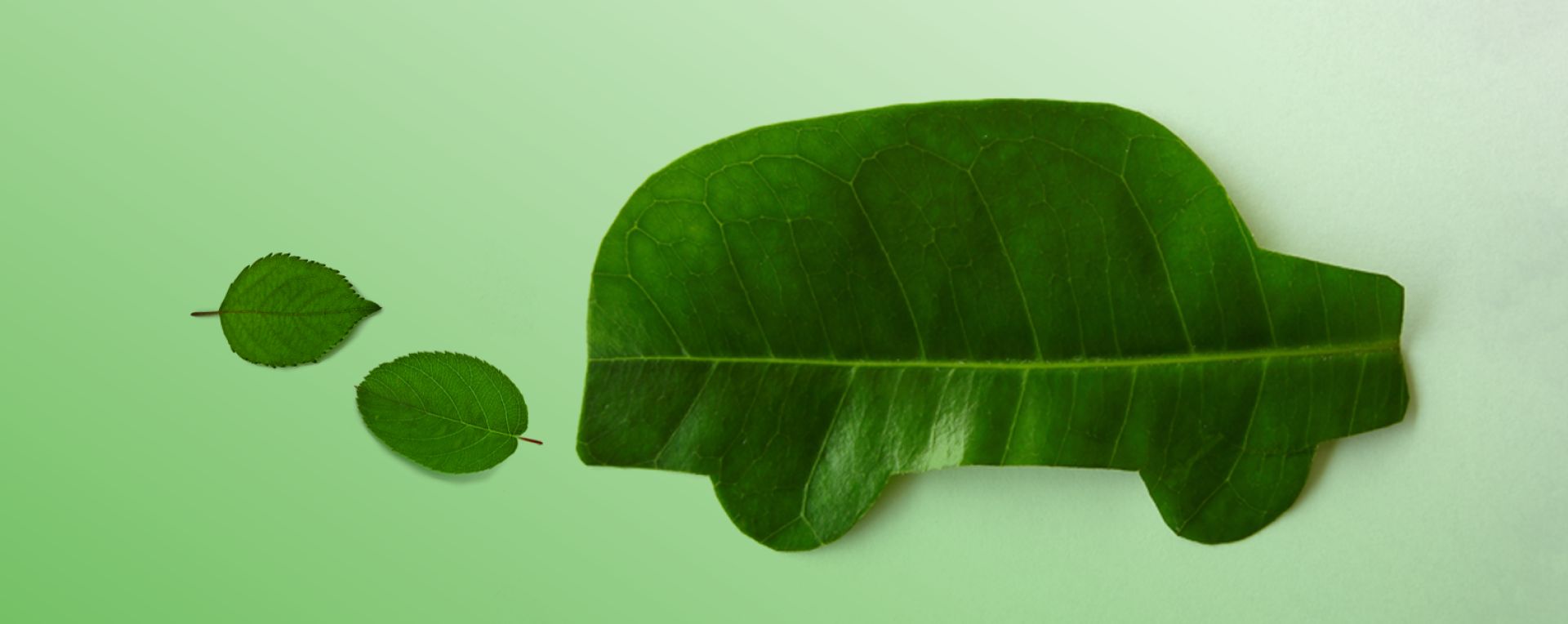
Few public transport companies in the world have higher climate ambitions than Qbuzz in Groningen and Drenthe. With 186 zero-emission buses (164 electric and 22 hydrogen) in use this year, and a CO2-emission reduction of no less than 90% compared to last year, Qbuzz has set a inspiring example for the rest of Europe. How did they do it? Michel van der Mark of Qbuzz and Erwin Stoker of the provincial public transport authority OV-bureau Groningen Drenthe tell the fascinating story behind ‘the largest zero-emission bus implementation in Europe’.
On the 15th of December 2019, a spectacular overnight operation took place in the city of Groningen as 164 diesel buses rode off into the night and were replaced by shiny new electric buses. ‘To date it’s the biggest zero-emission bus implementation in Europe’, says Michel van der Mark, Director of Business Development at Qbuzz, the company that had won the public transport tender from Groningen and Drenthe for the period 2020-2030.
‘The competition in the race to zero-emission public transport is strong,’ adds a smiling Erwin Stoker, Director of Development at OV-bureau Groningen-Drenthe, the public transport authority which oversees the public transport sector. ‘Especially from Amsterdam. But we beat them. And not for the first time.’
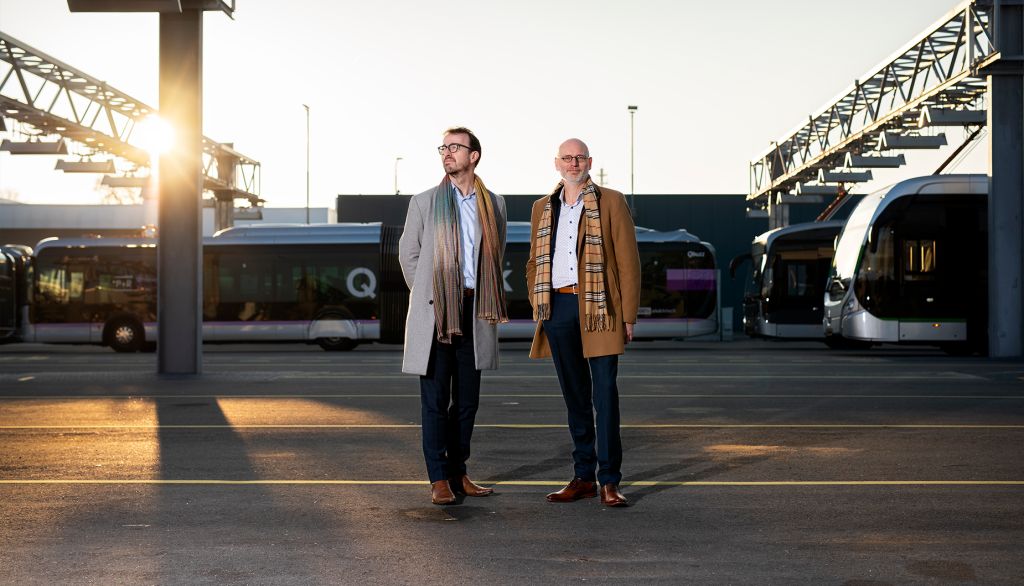
The two men are still basking in the glory of the switching operation as we talk them in the busy offices at the bus depot in Groningen on a morning in January. They are particularly proud that they pulled off the operation with their two organizations in partnership. ‘Normally with an operation like this an outside team is flown in,’ explains Van der Mark. ‘But we said, no way. We wanted to do it ourselves. And we did.’
The electric city buses are economically competitive with diesel buses over 10 years.
Michel van der Mark, Director of Business Development at Qbuzz
The operation went reasonably well, considering the huge change involved. That’s not to say there were no hiccups or teething problems. ‘A lot of flexibility is required from our drivers,’ says Van der Mark. ‘They all went through intensive training and they all got a computer tablet to work with. They now have to work within a carefully planned system, so they are less in control than they used to be.’
One complaint from the drivers is that their display shows the status of the battery only in percentages, not in number of kilometers. Van der Mark says that will be changed in the next update if possible. Nevertheless, ‘most drivers do adapt, and they’re happy with the comfort of the new buses, especially the reduction in noise,’ says Stoker.
Careful strategy
So what motivated Qbuzz –a subsidiary of Ferrovie dello Stato Italiane, the Italian national railway operator – to undertake this far-reaching and risky transformation to its bus fleet in Groningen? ‘Most of all it was the requirements set out by the OV-bureau in the tender,’ says Van der Mark. And in the Northern Netherlands, adds Stoker, where the natural gas industry left deep scars, ‘we take the energy transition seriously’.
The OV-bureau’s key demands for the 2020-2030 contract were based on the national Zero Emission Bus agreement which stipulates that after 2025, all new buses have to be zero-emission, and by 2030 the whole fleet must be zero-emission. On top of that, OV-bureau asked for all city buses to be electric, to deploy 22 hydrogen buses on regional routes and to reduce emissions for the remaining fleet.
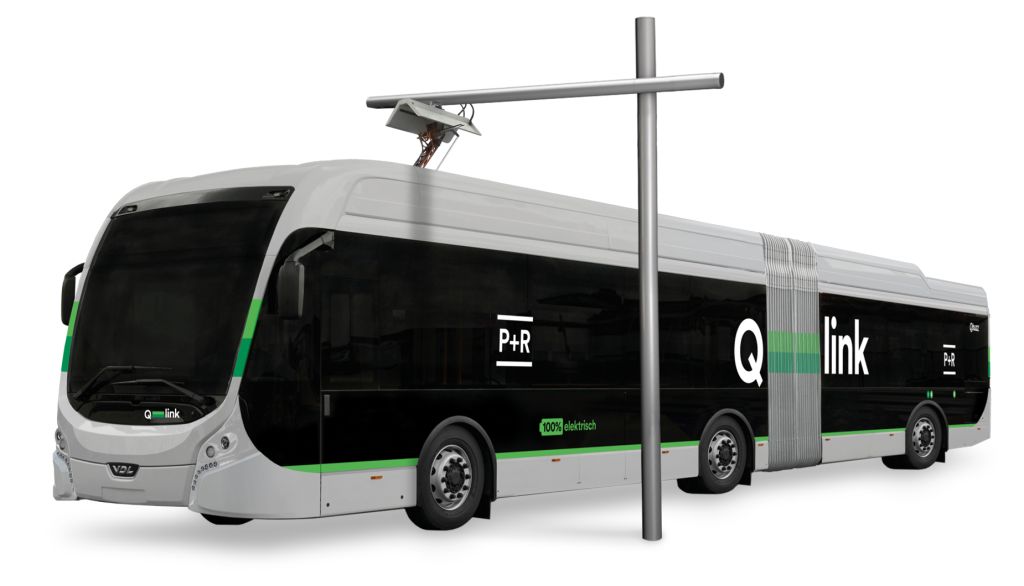
Qbuzz, although it had two strong competitors which made credible offers, won the contract because it managed to overbid on the demands. Van der Mark: ‘We offered 60 more electric buses than we needed to. We are almost meeting the 2030 target right from the first year. We reduced emissions by 90%. Paris is a done deal for us!
Needless to say, Qbuzz had to craft a careful strategy to deliver its plan. ‘We started testing in 2017,’ says Van der Mark. ‘I have to admit it was easier for us because we were the incumbent operator. If we hadn’t been, it would have been much more difficult to make this work. We already had 12 electric buses and 2 hydrogen buses running, so we were able to do lots of tests.’
Best solution
Qbuzz has four types of buses in operation: 45 electric city buses for city transport, 85 ‘Q-link buses’ both for city and regional transport, of which 59 are electric and the remainder run on HVO biodiesel, 170 regional buses for longer distances and 60 ‘Q-liners’: long-distance 100 km/h motorway buses. ‘For each type, we needed to find the best solution.’
It turned out that for the 45 city buses, overnight charging works fine. For the Q-link buses, however, Qbuzz found overnight charging was not sufficient. So the company invested heavily in about 26 overhead fast-charging stations which were built mostly at the terminal stops of the various bus lines. ‘This was a big investment,’ says Stoker. ‘Each charging station costs between €100,000 and €150,000.’
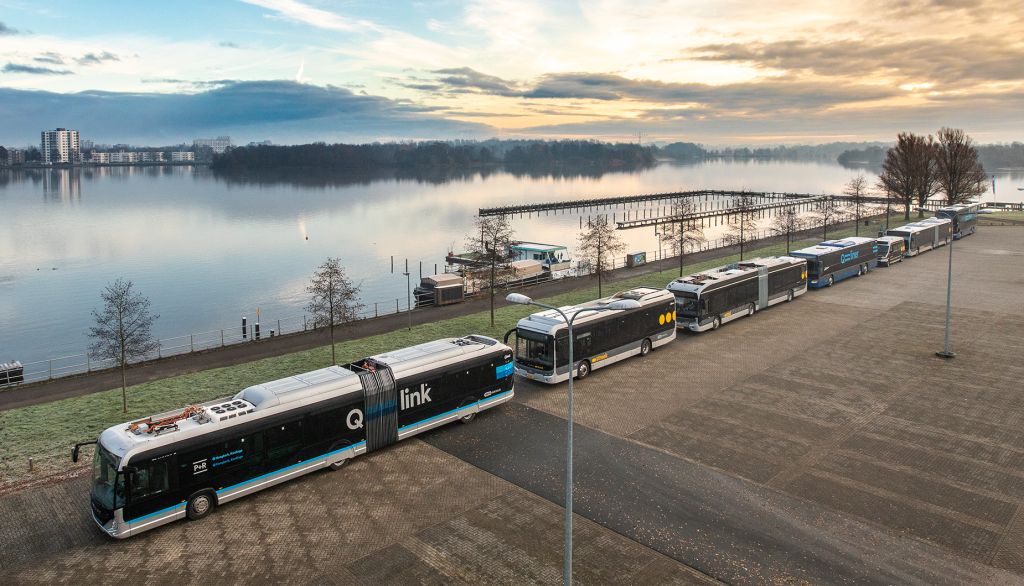
For the longer-distance buses, Qbuzz decided that electric batteries are not always the most economical option. Here the company opted for a mixed strategy. Van der Mark: ‘We bought 60 electric buses for our regional service. The other buses stay on diesel, but they all run on biodiesel. To be precise, on HVO, hydrotreated vegetable oil, which is made from frying oil and other waste products.’
We deliberately selected three different manufacturers to supply the buses. We took a bit of a risk with this, but we wanted to boost competition and stimulate the market.
Michel van der Mark, Director of Business Development at Qbuzz
For the Q-liners Qbuzz has not found a definitive solution yet. Electric batteries are not ideal for these long-distance buses. ‘You would need a very big battery which would make the buses too heavy.’ The solution may come from hydrogen. As the Northern Netherlands is widely considered the Hydrogen Capital of Europe, for Qbuzz and the OV-bureau hydrogen is a logical option. Qbuzz actually has 2 hydrogen buses in operation already and will add 20 more in 2020, with the help of an EU subsidy. Belgian manufacturer Van Hool will supply the hydrogen buses.
It is noteworthy that Qbuzz receives no subsidies for its electric buses. ‘The electric city buses are competitive with diesel buses over 10 years,’ says Van der Mark. ‘They are about twice as expensive to buy but much less expensive to operate and maintain.’ The Q-link buses do require an additional investment of some €10 million. ‘That’s €1 million per year for a contract that’s worth €110-115 million per year. We believe that’s acceptable.’
Van der Mark notes that Qbuzz’s Italian mother company does not provide any extra funding. ‘We have to meet strict profitability requirements. They make no exception for us. But they are very happy with us. They visit us frequently to see how we are doing things here in the Northern Netherlands.’
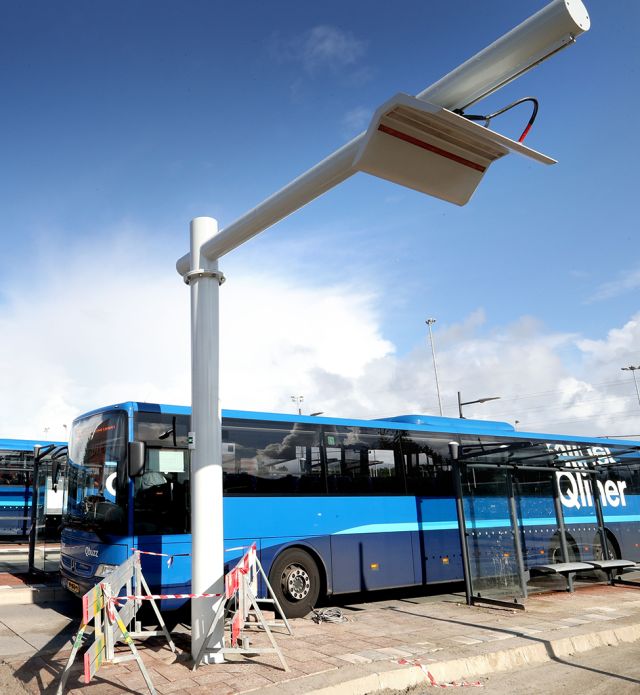
Firmly in charge
Qbuzz and OV-bureau did not just keep the changeover operation in their own hands, they also remain firmly in charge of the new system. ‘We decided we did not want to be dependent on any one supplier,’ says Van der Mark. ‘We deliberately selected three different manufacturers to supply the buses. We took a bit of a risk with this, but we wanted to boost competition and stimulate the market.’
The existing supplier, VDL, supplied the city buses, Ebusco, a Dutch startup e-bus manufacturer, delivered the regional buses, and French manufacturer Heuliez supplied the luxury Q-link buses. In the past, Stoker adds, ‘you would just order 300 diesel buses from one manufacturer and let them take care of the rest. Those days are over.’
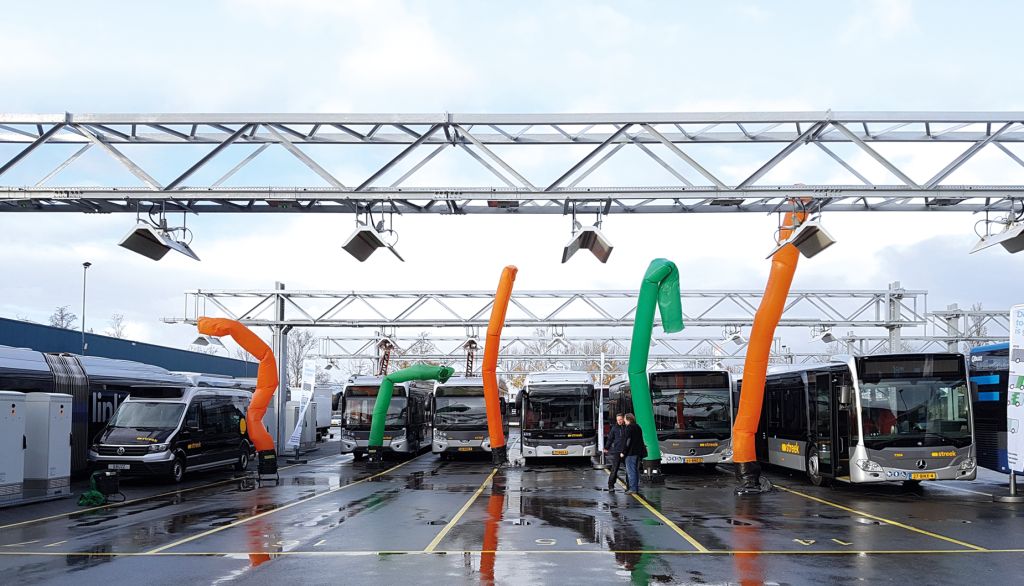
Qbuzz and OV-bureau have also maintained control over the EV charging stations, which are supplied by ABB and Heliox. Van der Mark: ‘Here too we didn’t want to be tied to one manufacturer. We demanded – and got – a standardized system that can work seamlessly with all of our buses.’
Similarly, Qbuzz has kept full control over the data the system generates. ‘The data is very important for us to further improve our service,’ says Van der Mark. ‘We have a data scientist working full-time to analyze and optimize the system. We don’t just want to be sustainable. We also want to provide the best service possible to our customers. After all, it’s no use if you have zero-emission buses but no passengers!’
It’s no use if you have zero-emission buses but no passengers.
Michel van der Mark, Director of Business Development at Qbuzz
In the coming years, Qbuzz and OV-bureau will continue to improve the system. ‘You used to be able to lean back when you had won a contract,’ says Van der Mark. ‘We can’t do that anymore.’ The first priority, he adds, is ‘to gradually push out the HVO vehicles and replace them with hydrogen or battery electric buses.’
And that hydrogen will be ‘green’, says Stoker: Meaning it’s made from renewable energy, not from natural gas. ‘We’re in a good position here to produce green hydrogen. The north of the Netherlands is the landing place for several high-voltage cables that bring green power from Denmark and Norway. And since there is congestion in the networks inside the Netherlands, the electricity arriving from Scandinavia is ideally suited to be turned into hydrogen.’
Hydrogen is the future of mobility
The drive for clean mobility in the Northern Netherlands is not limited to public transport company Qbuzz. There are many other private and public initiatives taking place.
One example comes from the town of Uithuizermeeden, up in the north of Groningen province near the port of Eemshaven. There, the taxi and personal transport company UVO, founded in 1923, has taken the courageous step to transition towards zero emission transport.
PitPoint, part of the Total Group
Twenty of UVO’s cars have long been driving on green gas, explains Vincent Medendorp, co-owner of the company with his wife Anita. In 2018, the company went a step further when, prodded by a public tender for school buses which required lower emissions, it bought a hydrogen car, a Hyundai Nexo. Without a subsidy.
This year, UVO is ready to buy a number of additional hydrogen cars. This time the company does hope for some public support, says Medendorp. UVO prefers hydrogen to battery electric cars, mainly because of the higher range provided by hydrogen. ‘Range matters to us here in the countryside,’ says Medendorp. He notes that his company handles a lot of crew changes of offshore personnel, who are driven to and from the major airports in the Netherlands, Belgium and Germany to Eemshaven.
At this moment, UVO gets its hydrogen either at a self-service filling station in Delfzijl, or at a service station in the city of Groningen, where ‘you have to make an appointment to charge’. As more hydrogen stations are opened across the Netherlands, Medendorp is convinced that for transport companies like his, ‘hydrogen is the future’.
We regard the Northern Netherlands as the European energy region of the future.
Stefan van der Spek, Sales Officer at Holthausen Clean Technology
Another major player in clean mobility in the Northern Netherlands is the Holthausen Group, based in the town of Hoogezand. Holthausen, a family firm founded in 1945, achieved worldwide fame when in 2017 it successfully converted a Tesla Model 3 to drive on hydrogen, dubbed the Hesla by its inventor.
The company, which traditionally supplies gases and firefighting technologies, in recent years set up separate divisions in various clean technologies: one that supplies green electricity (Holthausen Clean Energy), one that builds hydrogen filling stations (Holthausen Energy Points), and one that converts cars, vans and trucks from diesel to hydrogen (Holthausen Clean Technology).
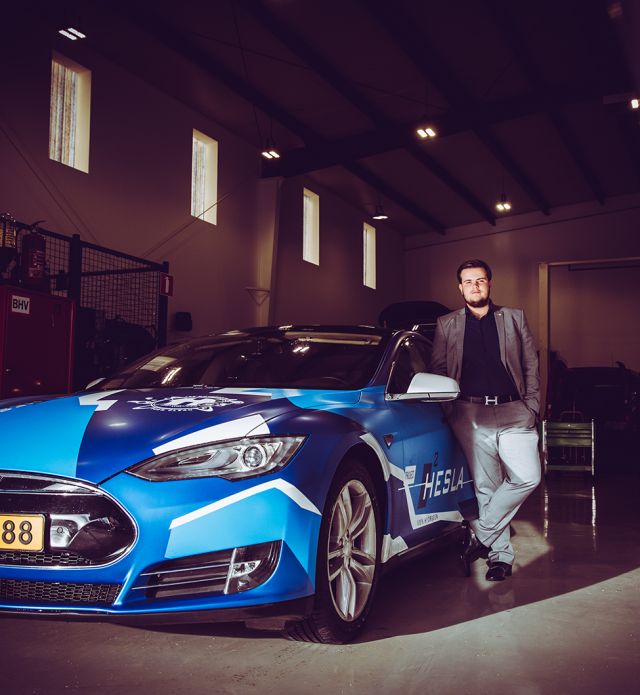
Stefan van der Spek, responsible for sales in the Clean Technology division, says that Holthausen, as a gas specialist, is a firm believer in green hydrogen as the transport fuel of the future. ‘Until recently, we mostly converted diesel cars to run on green gas in the form of CNG (compressed natural gas), but we have stopped CNG conversions for now and have switched to hydrogen, for which there is a lot of demand.’
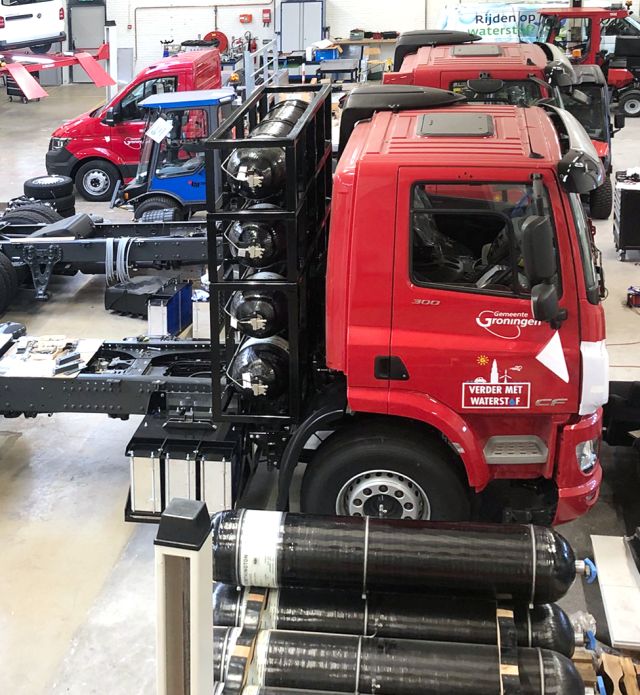
Holthausen did around 25 hydrogen conversions last year, and expects to do at least 50 this year, says Van der Spek, mostly DAF trucks and Volkswagen vans. ‘Our target is to convert 250 vehicles every year.’ But why would customers want to buy converted cars rather than simply buying new hydrogen vehicles? ‘Because most manufacturers don’t supply hydrogen vehicles yet. Hyundai and Toyota are the only ones. Volkswagen has indicated it will not start manufacturing hydrogen vans for a while. So, over the next few years, we still see a lot of growth potential.’
The company also recently received orders from a number of cities, including Amsterdam and Rotterdam, to convert their fleet of street sweeper vans to run on hydrogen. ‘These vehicles are heavy and require a lot of power. If you put a battery into them, they become too heavy. So hydrogen is a good solution here.’
Holthausen does not just convert vehicles to hydrogen, it also builds hydrogen filling stations. At this moment it is building two, one in Groningen and in Amsterdam. ‘We tackle the chicken-and-egg problem of hydrogen transport at both ends,’ says Van der Spek.
For Holthausen and the Holthausen family, the Northern Netherlands is ‘the European energy region of the future,’ says Van der Spek. ‘This is our home. We believe it is great to invest here, create jobs and help build a clean mobility future for our children.’
Breaking th energy monopoly
The provinces of Groningen and Drenthe have launched a drive to roll out 1,000 public EV-charging stations across the region over the next three years. This is not just an impressive number, but ‘the way we’re doing this is unique in the world,’ says Iris Kolkman, a project manager with the province of Groningen.
Normally, explains Kolkman, an EV-charging station gets electricity from only one supplier. ‘Usually you have an all-in contract with the supplier of the charging station and the electricity supplier.’
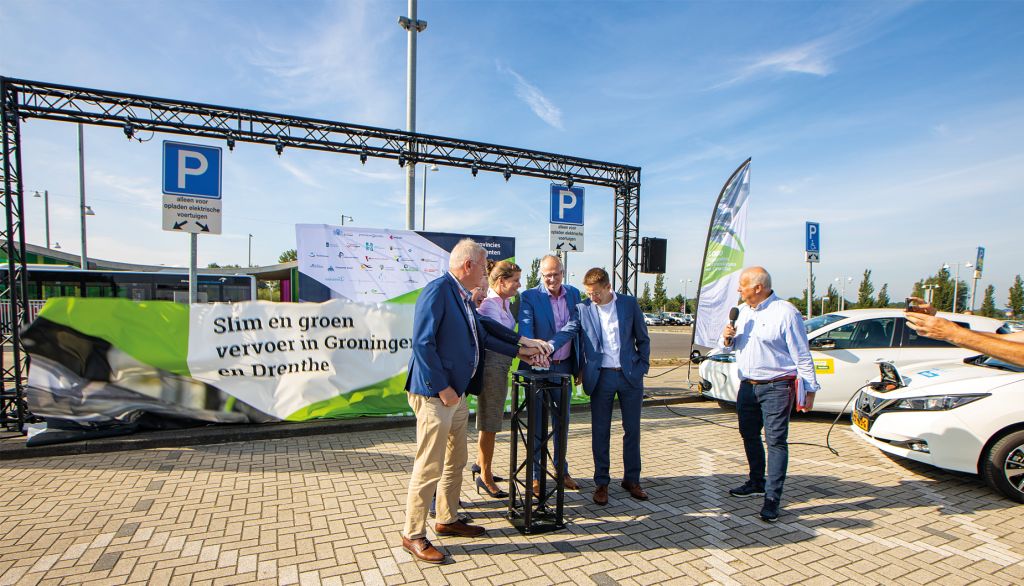
But Groningen and Drenthe wanted to do things differently. ‘We wanted to break the monopoly of the big energy companies. We wanted all electricity suppliers to have a chance to supply electricity on our charging stations. In particular we wanted our local suppliers, e.g. renewable energy cooperatives which produce wind and solar power in the region, to be able to supply power to the EVs that we have driving around here.’
To make this possible, Groningen and Drenthe are introducing a unique concept: all of the public EV charging stations in the two provinces will allow any energy supplier to deliver power to the EV network. There is even a plan in place to expand the network to include other regions in the Netherlands as well, so the entire Dutch EV charging market will become accessible to all energy players in the Netherlands. ‘There is no other project like this in the world,’ says Kolkman.
What if an EV owner does not have a contract with a power supplier? ‘Then they can make use of our default supplier, Holthausen Clean Energy, who supply 100% locally sourced green power.’
All visitors to the Northern Netherlands can be sure there will always be a public charging station nearby, if they come here.
Iris Kolkman, Project Manager Energy Transition at the Province of Groningen
The rollout of the EV charging stations in the Northern Netherlands has other unique features as well. The locations where the stations will be built will not be decided top-down by the provinces, but on the basis of local demand. ‘Charging station follows car,’ is how Kolkman puts it. The way it works is that if a resident would like to have an EV station near his or her home, they can ask the province, and if the house has no driveway and there are no other charging stations nearby (or if nearby stations are already used intensively), the station will be built within 250 meters of the house.
In addition, the provinces have identified a number of ‘strategic spots’ where they expect a lot of demand, says Kolkman. ‘We want to make sure that every village in our provinces has at least one public charging station. So, all visitors to the Northern Netherlands can be sure there will always be a public charging station nearby, if they come here.’
The two provinces have the means to expand the program from 1,000 to 1,200 stations if demand is high, says Kolkman, but she adds that the current rollout is already being overtaken by a bigger national initiative on the horizon. ‘The government has just decided 1.7 million EV charging stations are needed in the Netherlands over the next decade, of which 12,000 public stations will be built in the province of Groningen alone. This is part of the national climate agreement which mandates that all new cars must be zero-emission from 2030 on. So, there is no way back: electric driving is here to stay.’
Join TopDutch
So what will be your next move? How will your company play a leading role in the worldwide energy transition? Contact our network of knowledge-intensive institutions and innovative and entrepreneurial companies. You’ll soon see for yourself how quickly things get done here in the Northern Netherlands.
